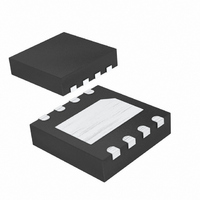MAX1089ETA+T Maxim Integrated Products, MAX1089ETA+T Datasheet - Page 14

MAX1089ETA+T
Manufacturer Part Number
MAX1089ETA+T
Description
IC ADC 10BIT 150KSPS 8-TDFN
Manufacturer
Maxim Integrated Products
Datasheet
1.MAX1086ETAT.pdf
(15 pages)
Specifications of MAX1089ETA+T
Number Of Bits
10
Sampling Rate (per Second)
150k
Data Interface
MICROWIRE™, QSPI™, Serial, SPI™
Number Of Converters
1
Power Dissipation (max)
740µW
Voltage Supply Source
Single Supply
Operating Temperature
-40°C ~ 80°C
Mounting Type
Surface Mount
Package / Case
8-WDFN Exposed Pad
Number Of Adc Inputs
1
Architecture
SAR
Conversion Rate
150 KSPs
Resolution
10 bit
Input Type
Differential
Interface Type
3-Wire (SPI, QSPI, MICROWIRE)
Voltage Reference
External
Supply Voltage (max)
3.3 V
Maximum Power Dissipation
1454.5 mW
Maximum Operating Temperature
+ 85 C
Mounting Style
SMD/SMT
Minimum Operating Temperature
- 40 C
Lead Free Status / RoHS Status
Lead free / RoHS Compliant
Other names
MAX1089ETA+T
Aperture jitter (t
the time between the samples. Aperture delay (t
the time between the rising edge of the sampling clock
and the instant when an actual sample is taken.
For a waveform perfectly reconstructed from digital sam-
ples, signal-to-noise ratio (SNR) is the ratio of full-scale
analog input (RMS value) to the RMS quantization error
(residual error). The ideal, theoretical minimum analog-to-
digital noise is caused by quantization error only and
results directly from the ADC’s resolution (N-bits):
In reality, there are other noise sources besides quanti-
zation noise: thermal noise, reference noise, clock jitter,
etc. SNR is computed by taking the ratio of the RMS
signal to the RMS noise, which includes all spectral
components minus the fundamental, the first five har-
monics, and the DC offset.
150ksps, 10-Bit, 2-Channel Single-Ended, and
1-Channel True-Differential ADCs in SOT23 and TDFN
Figure 11. Power-Supply and Grounding Connections
14
R* = 5Ω
______________________________________________________________________________________
+3V OR +5V
*OPTIONAL
V
DD
0.1μF
SNR = (6.02
AJ
MAX1086–
MAX1089
) is the sample-to-sample variation in
GND
SUPPLIES
Signal-to-Noise Ratio
N + 1.76)dB
Aperture Definitions
V
LOGIC
= +5V/+3V GND
+5V/+3V
CIRCUITRY
DIGITAL
DGND
AD
) is
Signal-to-noise plus distortion (SINAD) is the ratio of the
fundamental input frequency’s RMS amplitude to RMS
equivalent of all other ADC output signals.
Effective number of bits (ENOB) indicates the global
accuracy of an ADC at a specific input frequency and
sampling rate. An ideal ADC’s error consists of quanti-
zation noise only. With an input range equal to the full-
scale range of the ADC, calculate the effective number
of bits as follows:
Total harmonic distortion (THD) is the ratio of the RMS
sum of the first five harmonics of the input signal to the
fundamental itself. This is expressed as:
where V
V
monics.
Spurious-free dynamic range (SFDR) is the ratio of RMS
amplitude of the fundamental (maximum signal compo-
nent) to the RMS value of the next largest distortion
component.
PROCESS: BiCMOS
For the latest package outline information and land patterns, go
to www.maxim-ic.com/packages. Note that a “+”, “#”, or “-” in
the package code indicates RoHS status only. Package draw-
ings may show a different suffix character, but the drawing per-
tains to the package regardless of RoHS status.
5
PACKAGE
are the amplitudes of the 2nd- through 5th-order har-
8 SOT23
8 TDFN
TYPE
SINAD (dB) = 20
THD
1
is the fundamental amplitude, and V
=
20
ENOB = (SINAD - 1.76) / 6.02
⋅
log
PACKAGE
Signal-to-Noise Plus Distortion
Spurious-Free Dynamic Range
T833+2
CODE
K8F-4
⎛
⎜
⎝
⎛
⎝
Total Harmonic Distortion
Package Information
V
2
log (Signal
Effective Number of Bits
2
+
Chip Information
V
OUTLINE NO.
3
2
21-0078
21-0137
+
V
RMS
4
2
+
/ Noise
V
5
2
PATTERN NO.
⎞
⎠
/
90-0176
90-0059
V
LAND
RMS
2
1
⎞
⎟
⎠
through
)







